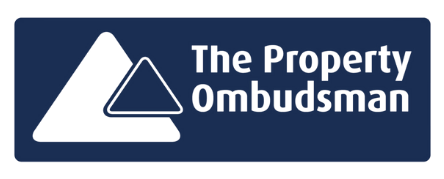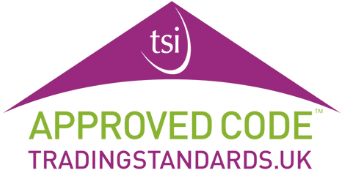Are you keen to get onto the property ladder? Well, you aren’t alone.
Millions of people across the UK dream of buying their first house. But with property prices constantly increasing and the average income struggling to keep up, the government has had to offer more innovative ways to help people achieve this. One of these methods is known as ‘Shared Ownership’.
If you have inherited a shared ownership property from a loved one, you will likely be going through a particularly difficult time. But there may be a silver lining: you can retain your equity in the house (and gradually increase it) via something known as ‘staircasing’.
So, what is staircasing, and how easy is it to achieve? Keep reading for the answers to these questions and more.
Shared ownership explained
Shared ownership in the UK is when you own part of your property and pay rent on the remainder you do not own (usually to a housing association).
For anyone struggling to get onto the housing ladder, shared ownership can be a more affordable option. First-time buyers can use it to start building equity in a property, even if they cannot afford an entire mortgage yet – for example, because their salary is too low or they have not raised a large enough deposit.
If you opt for shared ownership, you can still increase your percentage ownership of the house over time until 100% of the property potentially belongs to you. This process of increasing your equity is known as ‘staircasing’.
What is staircasing?
Staircasing is when you buy more property shares after becoming the owner. This will gradually reduce the amount that you pay in rent. In most cases, people will purchase at least 10% of the property at any given time when staircasing, with the ideal scenario being building your way up to 100% ownership.
Staircasing is an excellent way to gradually increase your equity in the property without breaking the bank by spending ‘too much’ in the early days. If it is your first time purchasing a house, or you are unsure about meeting your living costs (i.e. perhaps you recently had a reduction in pay), then taking things slowly and steadily can be an extremely intelligent idea.
Sometimes, there are restrictions on how long you are allowed to start staircasing after moving in. There have also been reports of properties having a staircasing cap (e.g. up to a maximum of 80%) so that they can be retained by local people rather than being used as a second home. You should check the terms of your lease to find out this information and get guidance from a solicitor.
Why might someone only own part of an inherited property?
If your loved one, who has unfortunately passed away, was living in a shared ownership house, then this could automatically pass over to you (and anyone else they leave the property to) through probate. It will then become your responsibility to keep meeting all the payments unless you decide to sell.
The option you choose in this situation may depend on how your income/savings compare to the person who passed away and your living situation. If you can afford to staircase to 100% ownership, then it may be in your interest to do so. On the other hand, if you already own a house, then owning two is not desirable to all people, as it can sometimes bring extra stress, maintenance, time and money.
Selling your inherited property enables you to cash in on the part that is owned and make a clean break. However, if you have inherited the shared ownership house alongside other family members, then you will need to discuss the best route forward with them.
Advantages of staircasing to 100% ownership
Staircasing is an excellent, ‘steady’ way to get onto the property ladder. As you increase the number of shares you own, your rent payments will go down, and your mortgage will increase (thereby growing your home equity). This is an excellent alternative if you cannot afford a mortgage on an entire house right away.
Furthermore, the greater the percentage of the house you own, the more you will benefit from increased property prices. With the UK housing market growing significantly over the past few decades, this will put more money into your pocket when the time arrives to sell.
Another advantage of staircasing is that you only need to do it when it is most convenient for you. You are not obliged to use the staircase, and you need no timeframe to achieve it. Likewise, even though you usually want to go up by at least 10% each time, you do not need to jump to 100% ownership immediately. This means you can coordinate with your personal and financial circumstances to make it work best for you.
When the time arrives to get a 100% mortgage, you will also have a wider choice of lenders and rates if you own the entire thing.
How to staircase
Your lease will usually outline how long you need to own the house before you can buy extra shares. If you comply with these requirements, you can tell your housing organisation about your intention to staircase.
The first thing you will need to do from here is get an independent, RICS-approved surveyor to visit your house and work out its value. This will need to be paid for by you. Once the valuation has been decided, you should pass this valuation forward to your housing association.
They can then inform you how much staircasing will cost, and you can then decide whether you want to proceed.
Details to find out when staircasing
There are a couple of steps you may wish to take during the staircasing process. Firstly, before you commit to anything, you should find out if you are able to sell back your shares further down the line, if necessary. While this is certainly not an ideal situation, it may be a useful solution to have in your back pocket if things become unexpectedly financially difficult.
Your lease may dictate other small details, too, such as how often you are allowed to staircase and whether there is a minimum amount.
You should gather the opinions of other part-owners in the property – for example, your siblings if you have inherited the house from a parent. Getting their perspective and finding a solution to keep everyone happy is ideal. This might include them selling you their shares or you all agreeing to sell the property altogether.
Is staircasing expensive?
There are other fees associated with staircasing that you need to consider. These include paying for surveys, conveyancing fees, and the housing organisation’s fee for arranging the staircase.
Stamp duty and mortgage fees may come into play, too, such as if you decide to remortgage in the process of staircasing.
You could need to keep aside a few thousand pounds to cover all these things.
















